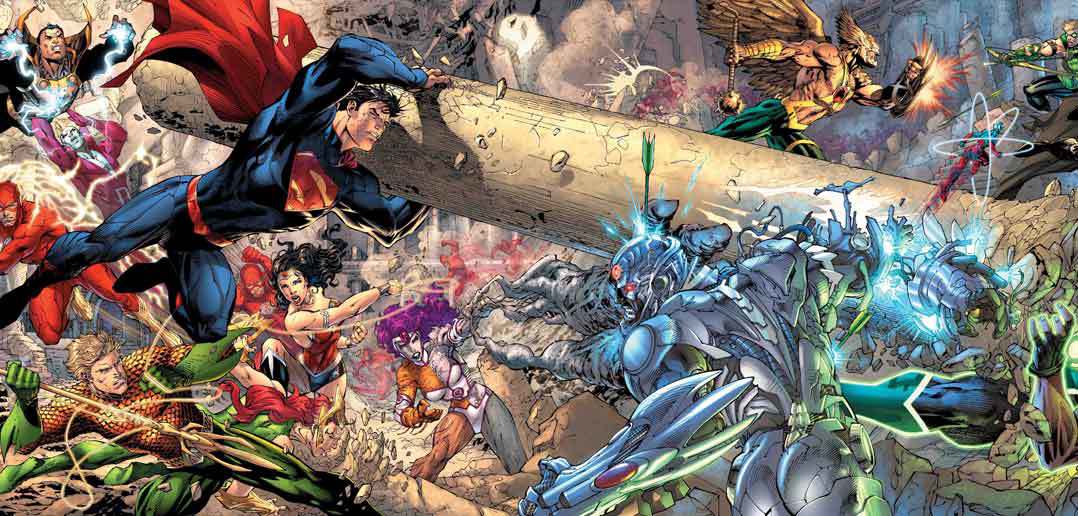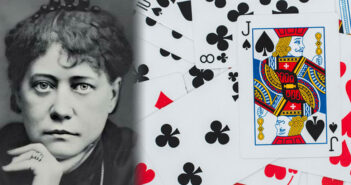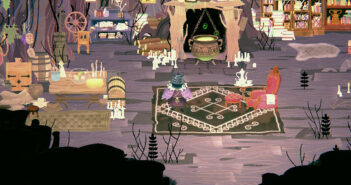Many of Eric Devlin’s nights are spent pouring over a sketchpad. His workroom is filled with flooding bookshelves, action figures standing guard and posters collected from various comic book conventions. A stereo fills the room with pounding rhythm as his pencil glides across paper—drawing life into the visual stories he loves to tell.
Mr. Devlin’s love for comic books began at a young age. He immersed himself so deeply into the genre that he has trouble remembering what his first comic book was. “I am willing to bet it was a Spider-Man book though,” Mr. Devlin said. He recalls feeling entranced by reading about wild adventures empowered with colorful images of fantastic characters and settings.
But reading these lively stories was not enough for him—he wanted to create his own. “My friends and I would be drawing characters and coming up with ideas for stories as young as 11 or 12. We were always coming up with new characters and drawing constantly.” Mr. Devlin’s passion continued with him throughout college. He attended the Massachusetts College of Art in pursuit of a B.A. in Illustration—having full intention of pursuing the comic book industry upon graduation.
But after completing college in 2002, contracts from Marvel and DC were not flooding Mr. Devlin’s mailbox. He’s since moved to New York City, living in Queens and working in a Manhattan law firm by day. But by night, his passion for comic books was nurtured as he developed the vision of an entrepreneur.
He and Eric Robinson formed their own independent comic publisher that same year—A.C.R.O.N.Y.M. Comics—producing such titles as Citizen Elvis, The Last Day of Albert Most, and Crash Damage. A.C.R.O.N.Y.M.’s mission statement tells of their devotion to publish high quality independent comic books. Competing in an isolated genre, A.C.R.O.N.Y.M. prides itself as being “all about supporting the independent scene, encouraging people to not only read comics, but to create comics.” A.C.R.O.N.Y.M. further supports the thriving minds of comic book creators by advertising various independent publications on their website and offering advice to any inquisitive mind interested in the comic book genre—one that is widely misunderstood.
The traditional American comic book’s birth in the 1930’s has left a lasting impression on American popular culture. Even today, their esteem is strong amongst their loyal devotees—whether reminiscing of Superman or admiring the harsh storytelling and imagery of Sin City. But outside the genre’s fan base, comic books are commonly associated with childish images of men dressed up like bats and spiders patrolling twilight cityscapes. They are passed off as juvenile flights of fancy—not capable of carrying artistic merit worthy of broader recognition. But writers and illustrators like Mr. Devin and his associates at A.C.R.O.N.Y.M.—and countless other young and old talents alike—use the comic book format as a dynamic medium to carry their messages.
David Sims, an associate professor of English at the Pennsylvania College of Technology does not ostracize comic books from his repertoire of literature—he embraces them. He believes the comic book genre is a medium that can carry both strong literary significance as well as powerful artistic expression. Having a B.A. in both English Writing and Political Science from the University of Pittsburg and a M.F.A in Creative Writing from the University of Alaska-Fairbanks, Professor Sims does not put values on art based off of generalized stereotypes. “[Art and literature] should wake us up and make us feel more alive. The trouble, of course, is that plural pronoun—who’s the ‘we,’ after all? What wakes me up often puts my students to sleep, and vice versa.”
Recalling memories of awakening to comic books in the early 1970’s, Professor Sims realized then that the field was rich with ideas and talent. But his love for comic books does not infringe completely upon his teaching. He believes that traditional literature should be taught in a literature classroom. He feels that teaching comic books in such a class has its limitations. “When it comes to literature classes, only words can take us deeper into the world and ourselves. Only words can lead the mind to other levels,” Professor Sims said. But there is an educational arena for comic books and their brand of storytelling and artwork, and he tries to capture it.
Professor Sims currently teaches a course at PCT entitled “The Graphic Novel.” The course examines the mechanics of what makes an illustrative narrative—speech balloons, typology, frames and juxtaposition along with looking at stories and their themes, styles, and moods. A variety of pieces are examined in the class—ranging from Eric Drooker’s Flood, to Frank Miller’s Sin City. Professor Sims believes in the course because he sees the value of offering students different outlets to understand the various forms of art.
Jerry Wemple, an associate professor of English at Bloomsburg University of Pennsylvania is more willing to let a literature class flow with a variety of texts. He holds an M.F.A. in Creative Writing from the University of Massachusetts at Amherst. He has two published collections of poetry—You Can See It from Here and The Civil War in Baltimore—and various awards for his creative works. Professor Wemple believes that for literature and its variety of pursuits, there is no greater time than the present.
Understanding that different students learn in different ways, he does not hesitate to use comic books to introduce some ideas that will help learning minds. He reflected on a book of graphic poetry incorporating work from various poets including Shakespeare, Wordsworth and Blake. “Since poetry is so visual, why not use something like this to introduce students to some complex works.”
Though Professor Wemple was a fan of the traditional action comic books during his youth, he has recently returned to the form during the past few years with new vision of the genre—paying close attention to figures like Harvey Pekar and Robert Crumb. Professor Wemple does not think that comics are limited in their ability to tell significant stories and capture powerful symbolism. “Invention is key. One can have cliché visual images as well as cliché language.”
Among the comic book loyalists wishing to make their mark, Ben Perez and Matt Rothblatt also devote their time to creating their own work in the genre. Both being the founders of Phi3 Comics, the publisher of their original comic book series, Spiralmind, they both believe that the comic book genre has much to offer its readers. “Books tell stories in a one dimensional plane, leaving readers to expand their imagination,” Mr. Perez said while reflecting on his love for traditional literature. “But comic books offer a two dimensional perspective that allows the reader to see what the creator sees,” Mr. Perez said in following. He earned his B.S. in Electrical Engineering from the University of Texas at El Paso and served as a U.S. Army Signal Specialist for nine years.
Mr. Rothblatt shares the same views as Mr. Perez. He believes that comic books enhance the literary field with their unique visual and written mode of storytelling. “Unlike the great works of the past, comics have the ability to reach beyond a certain type of audience,” Mr. Rothblatt said. Aside from his work on comic books, Mr. Rothblatt has a B.S. in Mechanical Engineering, also from the University of Texas at El Paso, and is pursuing his M.B.A at New Mexico State University.
Avid fans of comic books believe in their passion and support it completely. Currently living just outside of Atlanta, Georgia, Bryan Chonto has been reading comic books since the age of six. He recalls being introduced into the scene by Marvel’s The X-Men, vividly recalling the artwork of Jim Lee. He believes that comic books have potency to articulate social and moral issues just as well as any other art form—possibly better since comic books merge two different genres. He brought up titles such as Grant Morrison’s The Invisibles, Warren Ellis’ Planetary and Alan Moore’s Watchmen and V for Vendetta. “Find a novel that is more complex than those titles. They are pretty rare,” Mr. Chonto said.
Because of the overwhelming stereotypes, the genre has seen a change in terminology over the past few decades. In the 1970’s, comic book legend Will Eisner popularized the term, “graphic novel,” to differentiate his serious tales told with both words and illustrations from the common assumptions made with the term, “comic book.”
“It’s just a label. Graphic novel sounds more mature. It’s a propaganda phrase,” Mr. Chonto said, who believes a comic book is either good and worth the time or it’s not, just like anything else. He feels that whatever you call something, it won’t change its true worth.
Professor Wemple also believes the term serves aesthetics, but not necessarily a bad one. “We accepted the literary merit of something labeled ‘novel,’ so it is good to call something a ‘graphic novel.’”
But steps towards a wider cultural recognition of comic books have become more apparent—mainly due to the comic book boom within the film industry in recent years. Professor Sims personally believes that comic books are gaining cultural legitimacy, but he wonders if that will serve the genre well. “It’s always been an outsider’s art, and once you legitimize it, it opens the doors for a lot of lesser imitation, academic jargon and standards that can diffuse its power.”
Mr. Devlin is more hopeful that broader acknowledgment will open eyes to a worthy medium. He recalled lending his copy of V for Vendetta to a fellow coworker who wanted to read it after seeing the film adaptation. Not only does he think that comic book films are helping in the genre’s growing recognition, but that the industry is seeing practitioners with greater vision and talent. “This means higher quality, more mature work is being produced and recognized. I think [all of]that will go a long way towards the ultimate acceptance of comic books as true literary work,” Mr. Devlin concluded.
This essay originally appeared on Comic News on 09 January 2009.




